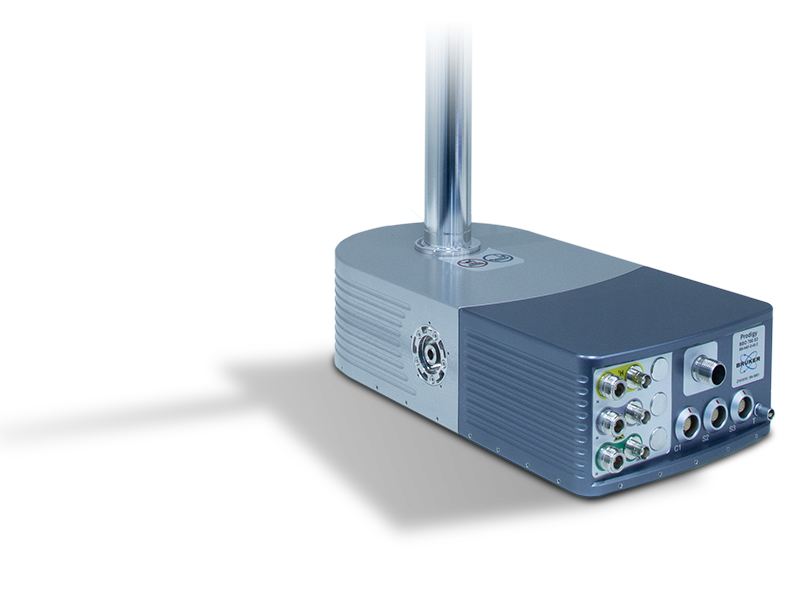CryoProbes for NMR


Apart from DNP the development of CryoProbes™ delivered the single largest increase in NMR sensitivity in the last few decades. This jump in sensitivity enables scientists to observe sample amounts that were considered too small only a few years ago.
Bruker BioSpin offers two product lines of cryogenic probe technologies: one based on a closed cycle helium cryocooler (CryoProbe), the other on an open cycle liquid nitrogen cooling system (CryoProbe Prodigy). While the detection coil temperature is considerably lower for the first case, the working principle is identical for both:
- The transmit/receive coils as well as the tuning and matching circuits are maintained at a very low temperature in order to reduce the noise contributions resulting from the random thermal motion of electrons in the conductors (Johnson-Nyquist noise). The resistivity of pure metals decreases further with lower temperature, which additionally reduces the noise. Preamplifier, filters and transmit-receive-switch are also cooled in order to improve the noise figure of the electronic components.
- The reduced noise contribution by probe and electronics yields a signal-to-noise-ratio enhancement of up to a factor of five for a CryoProbe and two to three for a CryoProbe Prodigy compared to an equivalent room temperature probe. This can easily translate into an order of magnitude higher throughput.
For both platforms automatic cool-down, warm-up and timer features are controlled by the CryoPlatform resp. The Prodigy Control Unit and the associated CryoPanel™ software. The one button operation of cool-down and warm-up are completed in ~4 hours for the CryoPlatform. For the Prodigy platform the corresponding durations are ~2 hours. A timer feature enables the execution of these functions at any predefined time, whether or not the user is attending. Once in the cold state a Cryoprobe can be used just like a conventional probe. The cooling systems control all functions and guarantee excellent stability during both short and long term experiments.
Although only about a millimeter away from the cold zone of the CryoProbe, the sample is stabilized at a user-defined temperature around ambient or, depending on the probe options, at a temperature between -40 °C and +135°C. Sample handling in a CryoProbe is the same as for room temperature high resolution probes. All cryogenic probes can be fitted with an ATM-Unit for automatic tuning and matching of all probe channels. For automatic sample changing Bruker Biospin offers different solutions ranging from high-throughput screening, overnight automation to multi-user open access (SampleJet, SampleXpress, SampleCase). For flow methods, CryoProbes are compatible with the BEST™ Flow Injection Accessory and may also be used in combination with LC-NMR. With CryoFIT™ a CryoProbe can be converted from tube operation to flow methods.
LabScape
Service & Life Cycle Support for Magnetic Resonance and Preclinical Imaging
Bruker’s commitment to provide customers with unparalleled help throughout the buying cycle, from initial inquiry to evaluation, installation, and the lifetime of the instrument is now characterized by the LabScape service concept.
LabScape Maintenance Agreements, On-Site On-Demand and Enhance Your Lab are designed to offer a new approach to maintenance and service for the modern laboratory









